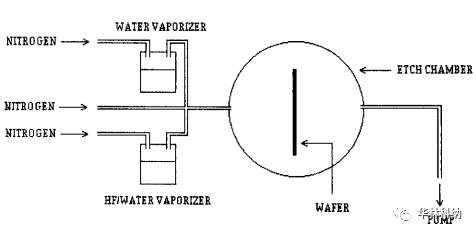引言
本文研究了硅的氧化物和氮化物的气相氟化氢蚀刻作用,新的氧化物选择性模式,概述了通过将无水高频与控制量的水蒸汽混合而产生高频蒸汽蚀刻剂的实现方法,描述了一种通过将氮气通过高频水溶液而引入高频蒸汽的系统。
实验
图1显示了本工作中使用的反应器的示意图;该反应器由一个惰性碳化硅反应室和两个装有适当溶液的加热汽化器组成,通过使受控量的氮气载气通过汽化器来输送蒸汽,该室没有被加热,并且处理压力保持在350托。为了进行电学表征,在掺硼多晶硅上制备了具有450纳米掺杂栅的LOCOS隔离MOSCAPs 5-10 Q-cm (100)取向的硅衬底,12纳米的栅氧化层是在900℃的干燥氧气环境中生长的,电容器既没有接受氧化后惰性环境,也没有接受金属化后形成气体退火。

结果与讨论








 最低0.47元/天 解锁文章
最低0.47元/天 解锁文章















 694
694











 被折叠的 条评论
为什么被折叠?
被折叠的 条评论
为什么被折叠?








